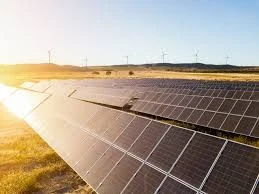solar inverter diagram
Understanding Solar Inverter Diagrams A Guide to Solar Energy Systems
As the world increasingly shifts towards renewable energy sources, solar power has emerged as a leading contender. A critical component of any solar energy system is the solar inverter. To comprehend how these systems function, it’s essential to grasp the fundamentals outlined in a typical solar inverter diagram.
A solar inverter is responsible for converting the direct current (DC) electricity produced by solar panels into alternating current (AC) electricity, which is the form usable by most household appliances. The inverter also plays a vital role in maximizing energy production and ensuring the system works efficiently.
Components of a Solar Inverter Diagram
1. Solar Panels The process begins with solar panels that capture sunlight and convert it into DC electricity. The diagram typically illustrates how arrays of solar panels are connected in series or parallel configurations to optimize electricity generation.
2. Combiner Box After the panels, the DC electricity flows into a combiner box. This component consolidates the output of multiple solar panels into a single cable, making it easier to manage wiring and connections.
3. Charge Controller The charge controller is often included in the diagram, particularly in off-grid systems. It regulates the voltage and current coming from the solar panels to prevent overcharging batteries.
4. Solar Inverter This is the heart of the conversion process. The inverter takes the raw DC output and converts it into AC. Most solar inverter diagrams specify different types of inverters, such as string inverters, micro-inverters, and central inverters, each suited for different system sizes and configurations.
solar inverter diagram

5. Output Connection After conversion, the AC electricity is typically directed to the home’s electrical panel. This panel distributes the electricity throughout the home, allowing for usage in appliances and other electrical devices.
6. Utility Grid Connection Many solar inverter diagrams show a connection to the utility grid. Grid-tied systems can send excess electricity back to the grid, earning credits for the energy fed back into the system through net metering.
Advanced Features in Modern Inverters
More recent solar inverters come equipped with smart technology that enhances their functionality. Features such as monitoring systems that track energy production and consumption in real-time, as well as built-in safety mechanisms, are often represented in updated diagrams.
Additionally, some diagrams highlight the inclusion of battery storage solutions. Battery banks allow homeowners to store excess solar energy for use during nighttime or power outages, thereby increasing the efficiency and reliability of the solar energy system.
Conclusion
Understanding the components of a solar inverter diagram is fundamental for anyone considering solar energy installation. By visualizing how solar panels interact with other system components, one can appreciate the intricacies of energy conversion and management. Solar inverters not only improve the efficiency of energy usage but also contribute to sustainable living by harnessing the power of the sun. As technology continues to advance, the role of solar inverters will become increasingly pivotal in the transition toward renewable energy solutions.
-
Unlocking Energy Freedom with the Off Grid Solar InverterNewsJun.06,2025
-
Unlock More Solar Power with a High-Efficiency Bifacial Solar PanelNewsJun.06,2025
-
Power Your Future with High-Efficiency Monocrystalline Solar PanelsNewsJun.06,2025
-
Next-Gen Solar Power Starts with Micro Solar InvertersNewsJun.06,2025
-
Harnessing Peak Efficiency with the On Grid Solar InverterNewsJun.06,2025
-
Discover Unmatched Efficiency with the Latest String Solar InverterNewsJun.06,2025







